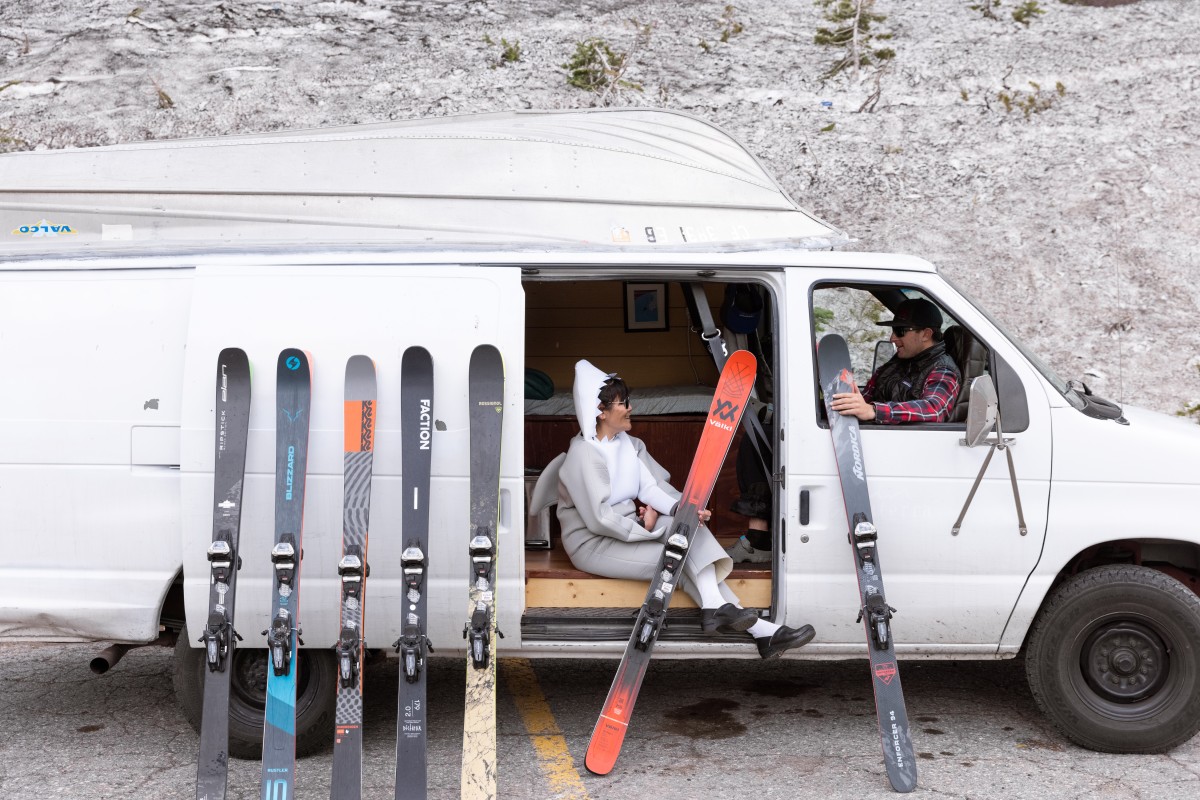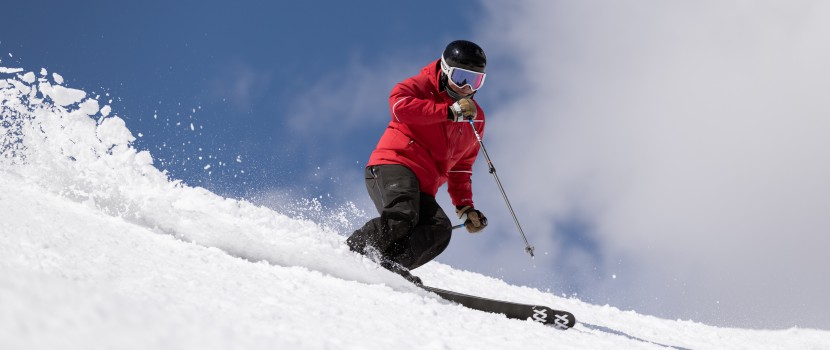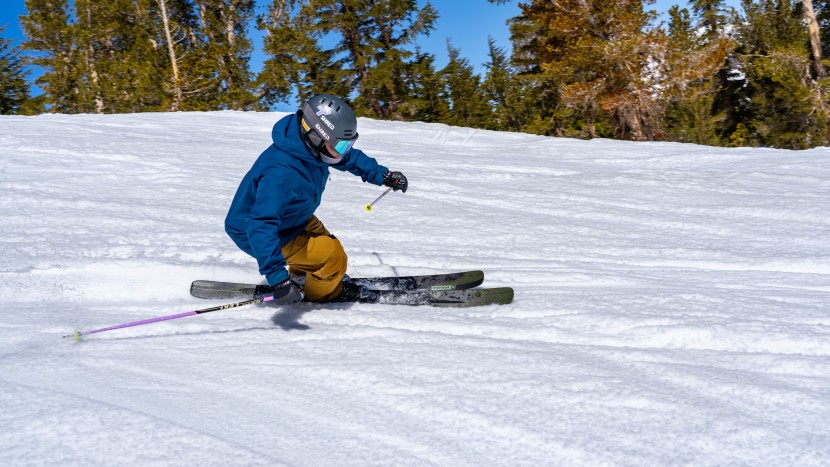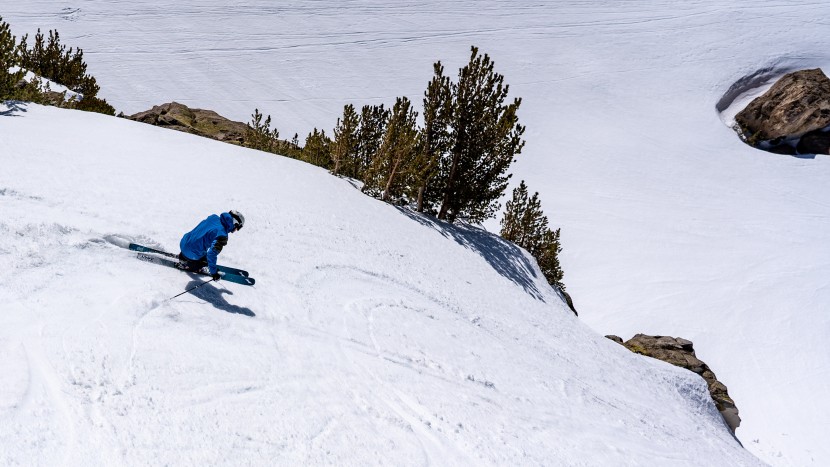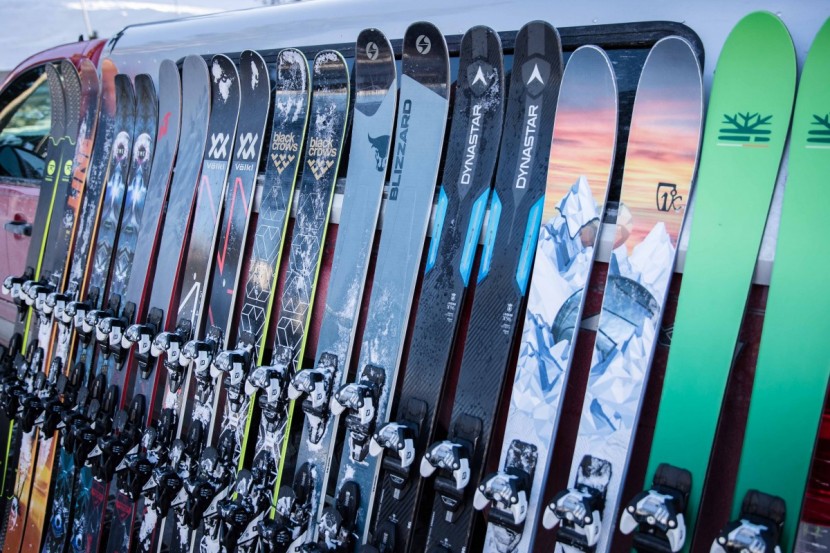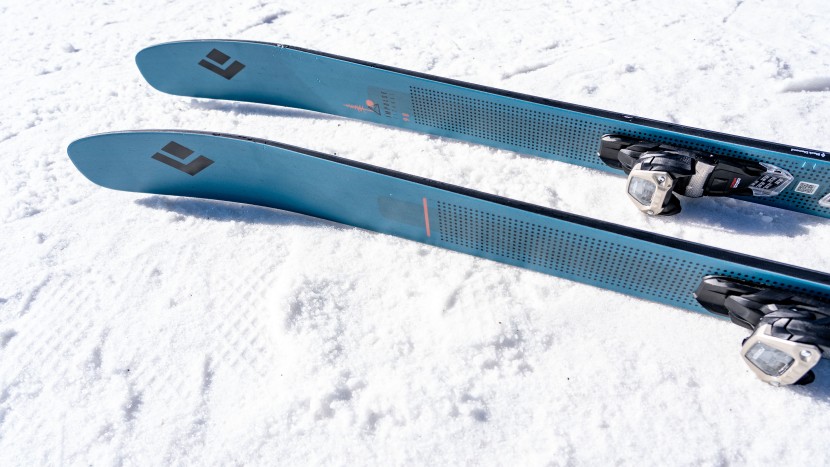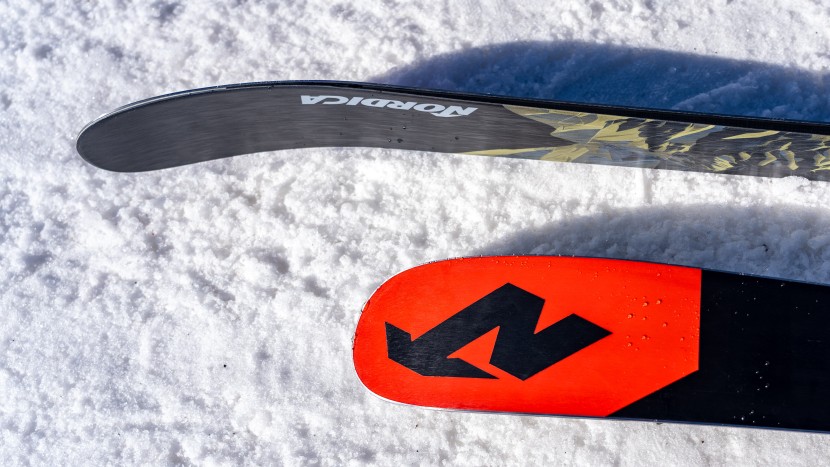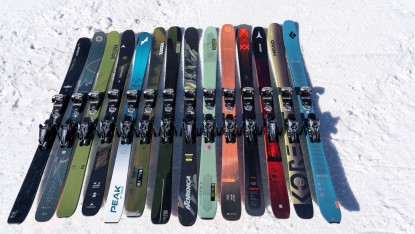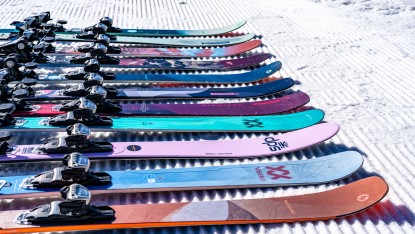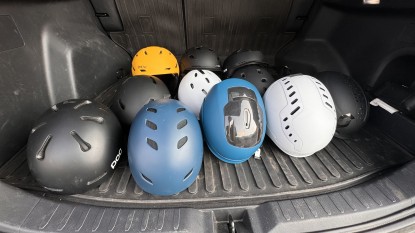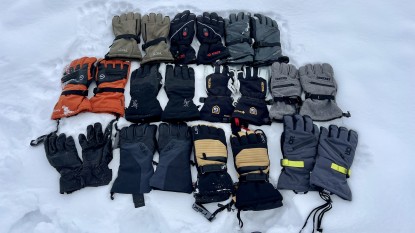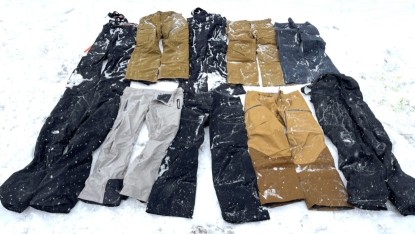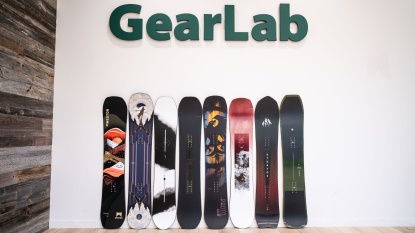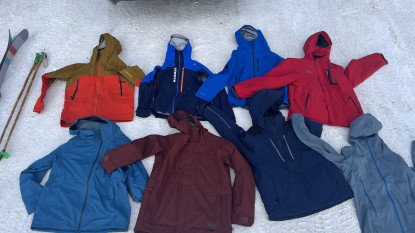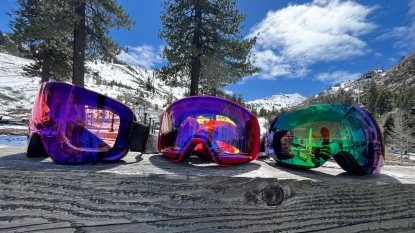The ski market is overwhelming these days, and everyone claims to have the best ski every year. There are fat ones, skinny ones, short ones, tall ones, some that go backward, some that spin, some that fly, some that are soft, some that are stiff. Every season, a ski manufacturer comes out with the latest and greatest technology that they claim will make their skis the lightest, stiffest, and most forgiving ever made. But how do you know which one is best for you?
Our review focuses on all-mountain models, which are the most versatile alpine skis. Skis continue to be expensive, and managing a 20 ski quiver just isn't practical. This article targets people looking for the one ski that can do it all.
We rigorously tested the skis that we review throughout all types of snow, and different mountains, to gain an excellent perspective on what makes an accessible and truly all-mountain ski. This article will cover the basics of ski construction and design while giving some advice about what to consider when you are buying a new pair.
Where to Start
Our advice in pursuing a single pair that can do it all is to be very honest about your abilities and what conditions you encounter most often. We all like to think we are the next Olympic Champion, but in reality, most of us just want to have a good time with friends while pushing ourselves to get a little better each day.
Average your terrain and style preferences together to find where you want your ski pair to perform best. For example, if you are primarily an on-piste skier and like to pin the throttle all the time, you may want a heavy and damp ski as your day-to-day ski. Powderhounds that only come out for the softest days of the year probably want a ski with a wide waist and lots of tip rocker.
The good news is that there are skis out there that can handle almost anything you throw at them. Your personal preference lies in your taste, style, ability, and the terrain and conditions at your local resort.
What Kind of Ski?
Not all skis are created equal. In the world of skiing, there are very specific tools and designs for different applications. Many models specialize in certain uses, such as racing or backcountry skiing. There are design characteristics that make some models more appropriate for certain circumstances.
While this review focuses on the broad category of all-mountain contenders, here is a general overview of skis you might run into when searching for the perfect pair.
All-Mountain
This review aims to find the most appropriate model for all-mountain conditions. Skiing is an expensive activity, and high-end models are just one piece of that very pricey puzzle. If you had the choice, wouldn't you prefer to have one pair that you could just pick up and go every day you went to your local hill without thinking twice? The good news is that we tested the models out there that serve the purpose of being well-rounded performers, no matter the conditions or terrain.
This is what our testers look for: a ski that will handle early morning groomers, powder days, and the almost bulletproof conditions found weeks after the last sign of a storm or under the snow guns. An all-mountain ski should do it all — handle well when making turns on firm groomers and provide plenty of float on a powder day. The true all-mountain ski can handle the East Coast, West Coast, Southern Hemisphere, Northern Hemisphere and not blink twice. The best of these also perform well in all of our testing metrics, not just a few. It is the epitome of versatility and is the right tool for a person who wants to own only one pair.
This year, we were fortunate enough to test a wide range of skis that work for many skier types. They have design features that help them balance your on- and off-piste needs. For the budget-conscious and the 20 days and less-a-year crowd, it makes sense to have one pair that can do it all. For the die-hards, it's nice to know that you have a pair that can tackle the whole hill on any given day.
Women's Specific Models
The GearLab Women's Ski Review will shed some light on the most versatile women's models out there and provide a thorough description of what is different about models designed specifically for females. It includes women's specific and some unisex models.
Women's specific models are usually shorter and have a softer flex than men's because ladies are usually shorter and don't weigh as much as their male counterparts. More aggressive women will need stiffer skis, and for that reason, many women use men's versions and love them. But the industry is getting better at recognizing women rippers and making women's specific skis burly enough for the hardest chargers, and not just using the worn-out “pink and shrink” method.
Powder
Modern powder skis are wide – think 100 millimeters+ underfoot – and usually feature a generous amount of rocker, often in both the tip and tail. Both of these qualities help you stay on top of the soft stuff. These models want to float and play in deep snow but can sometimes be squirrely on firm snow. Also, because of their wide waist and typically long length, they can be hard to transition edge to edge and make quick, tight turns on. If you have the extra cash and a penchant for collecting, or you live full time in Hokkaido, Japan, you should consider a pair for the deepest days of the season.
Race
Do you have a need for speed? Do you prefer a long, narrow, stiff pair that caters to pristine slopes and icy racecourses? Look no further than high-end race models. Race skis are further categorized depending on the type of race they're intended for. Slalom models are short, have a small turning radius, and appear more shapely than their other racing brethren. Giant Slalom and Super G models are longer and straighter for bigger turns and higher speeds. Downhill models are stiff, stable at speed, and rarely need to turn. All of these models tend to favor an aggressive tune and are truly designed with one theory in mind: if you're not first, you're last.
Park
Intended for big jumps, rail features, and half pipes, park planks are twin-tipped, narrow, and durable. They appeal to the freestyle-minded, who are more driven by creativity than traditional performance. These models are typically center-mounted to allow for going forward or backward. Twin tips are looser to turn than flat tails.
Big Mountain
Long, wide, and stiff, big mountain models like to go fast, go big, and plow through the toughest terrain and conditions. Think Freeride World Tour or Warren Miller Movies. These are an expert's choice for those who prefer big off-piste terrain and want something that can gobble it up. These models usually feature some camber underfoot, a wide body, and generous amounts of material to stiffen and toughen up the ski.
Backcountry
Backcountry skis are intended for human-powered excursions into the mountains. Although technically you could turn any ski into a touring set-up, most backcountry-specific skis are fairly lightweight. Top backcountry models weigh half to one-quarter as much as some of the models in our all-mountain review. Models suited for the backcountry use specialized “tech” bindings that free the heel for uphill travel and are fitted with climbing skins which allow for sliding forward but gripping backward. We don't advise lugging around your resort skis for long days of touring unless you have legs of steel or are just a glutton for punishment. Dedicated in-bounds models perform better going downhill but will slow you down when it comes to climbing a skin track.
Making Sense of Specifications
First off, be truly honest about your size, style, ability, and what terrain you enjoy most. Much of a product's performance will depend on how you use it. Remember that while some aspects of the design can make it easier for you in certain conditions, staying true to your skills and ability is the most important bottom line for your enjoyment out there. We all get hyped with the preseason ski movies of slaying big Alaskan spines from a heli drop, but is that what you'll be doing on an average day of skiing?
We believe a quality all-mountain model should, above all, be versatile. It isn't easy to balance performance across a huge variety of conditions and terrain, especially when there are already designs intended for very specific purposes. When choosing an all-mountain model, you should consider size, stiffness, weight, and forgiveness as starting points. Then consider the width, shape, and camber/rocker profile.
Length
We measure ski length in centimeters. Ski size lengths can range from about 70 centimeters for small children to 190 to 200 centimeters for race models, expert skiers, and very tall adults. Even though some consider it “cool” to ride long skis (190+ centimeters), these are very specific tools for very specific conditions or terrain. Here's a great rule of thumb for choosing the correct length: with the ski tails resting on the ground, select a length that stands between your chin and the top of your head.
Shorter lengths are generally easier to turn and are lighter. People with beginner and intermediate abilities will prefer shorter models. Longer lengths take more skill to turn and are generally heavier. Upper-intermediate and advanced folks prefer longer models because they have longer effective edges and are more stable at speed.
Ski Stiffness
Although it can be difficult to measure the stiffness of a ski, it is an important component of how the ski will perform. Designers achieve stiffness by using more core material, different glues, fiberglass layers, elastomer, foam and stiffening materials like metal (usually titanal) or carbon. Designers also use stringers or strips of metal or carbon to increase stiffness. A wood core is stiffer than a foam core. Full metal sheets make a ski stiffer than partial metal inserts or skis with no metal.
A ski's stiffness will affect how easily you can initiate a turn and maintain edge pressure. People that are lighter-weight and beginners will struggle to handle stiffer models. Advanced folks prefer stiff models because of their increased edge hold, especially on firm snow. Stiff models are also more capable of punching through rough terrain and variable conditions and can be more stable at high speeds, but tend to be far less forgiving and favor an advanced skier. Soft flexing models are better suited to bouncing around and are more forgiving.
Weight
Heavier models are usually more stable at speed and more powerful for variable conditions than lighter skis, but that is not a hard and fast rule. It's important to remember that lighter-weight skis are not always softer flexing. Anyone who spends any amount of time hiking or skinning in the backcountry should consider lighter skis.
Waist Width
We measure the width of skis in millimeters. One critical width measurement is at the middle, or “underfoot.” A ski's width at the waist is crucial for determining what type of snow and terrain it prefers. Generally speaking, the wider a model is underfoot, the more it will float in deeper and softer snow. Narrower-waisted skis will move more quickly from one edge to another and handle on-piste terrain and firm snow better.
If you are mostly off-piste and in soft snow, then a wider-waisted model is the better choice for you. In this case, performance is mostly a function of increased surface area. Products explicitly marketed for powder conditions tend to have much bigger waist widths, normally between 110 and 130 millimeters. Folks who deal with firm conditions and stick to groomed slopes should seek narrow models.
Another important thing to note is how wider-waisted skis affect the skier's body, particularly the muscles surrounding the knee and the knee joint itself. Designers specifically shape wider skis to promote flotation in deeper and softer snow. However, when skied in firmer conditions, especially over a long period, there are real risks to be considered. We encourage you to educate yourself on these risks and make your conclusions based on the many variables at play.
Sidecut and Turn Radius
We commonly measure a ski's width at three points. First, the widest part of the tip, then at the narrowest part underfoot, and finally at the widest part of the tail. A ski's sidecut refers to the general hourglass shape of modern alpine ski: shallower sidecuts result in wider turns, while deeper sidecuts are better at tighter turns.
A ski's turn radius is the radius of the imaginary circle that would form if you completed the sidecut arc. The smaller the turn radius, the tighter the turns a ski will naturally make. The ski's length can affect its turning radius. The same model in a different length will have a different turn radius. If you make many small turns, a ski with a small turn radius will be a natural choice for you. For big turns and high speed, a ski with a bigger turn radius will be more fun.
Be aware that other shape details will also dictate how a ski feels to turn. Skis with rockered tails will be easier to release at the end of the turn. Tapered tails will also release more quickly from the turn. Flat tails like to hook up and can hold you in the turn longer. People who like to rail turns and stay on edge will appreciate flat tails. Those who slide turns and like to scrub speed quickly will feel at home on twin-tipped models.
Camber/Rocker Profile
Besides the width, perhaps no other design characteristic will change a ski's feel as much as its camber/rocker profile.
Camber
Camber refers to the upward arching shape when you place the ski flat on the snow without weighting it. Place your skis base-to-base to help you understand how much camber they have. Generally, the camber profile is directly underfoot. Some models, such as race skis, will have a camber profile extending along the full length of the ski.
A cambered ski helps distribute your weight evenly and concentrates pressure on the ski's edge. The result is a predictable edge hold and more pop when turning. Stiff, cambered models perform best at high speed and in firm snow. The combination of camber underfoot compliments the playful rockered shape of most modern skis, creating fun, energetic boards that tend to be more versatile.
Rocker
Rocker is an upturn of the ski. The exact opposite of camber. The idea of using reverse camber can be traced back to one specific product, dreamt up by the legendary Shane McConkey in the early 2000s, the Volant Spatula. It borrowed its reverse camber idea from waterskis, where the shape keeps them afloat in water.
You can also see the rocker in your skis by placing them base-to-base. Different rocker profiles are available, and manufacturers will use different terms to describe their proprietary rocker blends. Our goal here is not to describe all possible combinations and corresponding nomenclature (that might take years) but rather to introduce a few concepts that will help to explain why rocker works. A fully rockered model has a gentle upward-facing bend from the tip to the tail, with the contact point underfoot.
Tip rocker, or early rise tips, moves the contact point towards the ski center. Because of the turned-up tip on rockered versions, they tend to want to float in powder and rollover crud better than a similar model without a rockered tip. Tail rocker moves the rear contact point forward toward the center.
Rocker can shorten the effective edge, and because of this, rockered models feel a bit shorter than traditionally cambered models. Generally, a rockered model will not hold an edge as well as models with greater camber. However, by shortening the effective edge, turn initiation becomes easier and quicker. The shorter effective edge and easy turning qualities of rockered models allow you to get on longer or wider planks and maneuver them more easily.
The Combo
Designers can use any amount of tip or tail rocker in combination with camber underfoot. Most modern all-mountain skis contain a blend of camber and rocker to improve versatility. Combining the two gives you the edge control and energy/pop of a cambered model and quick and easy turn initiation. Here are some general rocker and camber recommendations:
- The Combo — Early rise tips with camber underfoot is a good choice for a combination of on-piste and off-piste terrain because these skis maintain some of the edge control of a cambered model with the easy turning capabilities that the rocker provides. Early rise tips will also help to keep them afloat in deeper and more variable snow.
- Full Rocker — Fully rockered versions are recommended for off-piste skiing, especially in soft snow. They are highly maneuverable in tight spaces and keep you on top of tough conditions.
- Less Rocker — If you make your turns more often on-piste or on firmer snow, then we suggest you seek out models that have less rocker.
The Anatomy of a Ski
If you're not familiar with the overall design, construction, and material used in a ski, then as always, we're here to help. When you understand the bits and pieces that go into a design, you'll know more about ski specifications and have an easier time deciding what might be suitable for your needs. Material construction is, in part, what sets a quality pair of skis apart from a cheaper version. In our men's all-mountain ski review, we often reference each ski's construction and materials and how they affect its performance.
When designing an all-mountain ski, manufacturers face many trade-offs. A lightweight ski is usually less stable than a heavy one. Using stiffer materials will make the ski heavier, but it will also be more consistent and powerful. Adding rocker might make the ski more surfy and fun, but its carving performance and stability could pay the price. Life is all about finding balance, and designing a ski is no different.
Top Sheet
The top sheet is what you see when you look down at your skis. It is usually composite plastic material, but some manufacturers sacrifice weight to use more durable materials. This layer helps protect the core, layered on top of the composite layers and epoxy. The top sheet is where the graphics live. While they may be fun to look at and help you stand out in the lift line or on the ski rack, graphics can only improve ski performance in your mind.
Sidewall Design
The sidewall, like the top sheet, also protects the core. Sidewalls are usually plastic. Modern alpine skis use one of three popular sidewall construction designs — sandwich, semi-cap, and cap construction.
- Sandwich construction just looks like walls on the side of your ski; they are typical on skis with materials layered on top of each other from the base to the top sheet. Straight sidewalls are durable and contribute to a ski's stiffness and edging abilities.
- Cap construction uses a top sheet material that wraps over the side of the ski. These skis commonly have less torsional rigidity or edge hold but are lighter weight.
- Semi-cap construction designs combine both types. This construction offers a combination of weight savings and provides some torsional rigidity (underfoot). Many ski companies continue to experiment with this method.
Core
The ski's core is one of the components that make each ski unique. Some models use a few different types of wood to get a combination of performance characteristics, such as a lighter or stiffer feel. Wood cores are often preferred because they store energy and provide the pop that people look for in a quality product. Wood cores also dampen vibrations and hold up over time. These models tend to be heavier and more expensive than skis with a synthetic core.
Although less expensive, most ski manufacturing companies are getting away from using foam cores. They tend to be less durable and have lost popularity over time.
Edge
Metal edges provide the bite that lets you control your skis and stop on a slippery surface. Using a file and guide, you can sharpen edges with a careful hand. A trained tech can tune them to specific degrees to suit the conditions you normally face. The easiest and most efficient way to properly maintain edges is to have a trained technician do it for you using a machine. Having sharp and tuned edges also allows you to grip and stop, particularly useful in firm conditions.
Base
The base allows us to slide along the snow surface. Bases are almost always plastic, but not all bases are created equal. Some plastics are harder than others and can sustain more of a beating from rocks and hard snow. To save weight and cost, some manufacturers have thinner bases than others.
Bases are prone to scratching and gouging but are relatively easy to repair and maintain. A trained technician can fill in most scratches and then grind the base flat again. In a lean snow season, your bases might take a beating. Be sure to treat your shop technicians well and keep them well-hydrated.
For an excellent summary of modern ski materials and construction, we recommend this article on ski construction.
Ski Maintenance Tips
Skis are expensive; it pays to take care of them.
Wax
Ski wax helps your boards slide more easily, faster, and smoother. Wax carries a rating for specific snow temperatures. Wax is melted and spread on the base using an iron and then scraped smooth. There are rub-on waxes that help you glide better for a few runs, but it wears off quickly.
Sharpen your edges
Metal edges will naturally dull over time; hazards like rocks can also damage them. Dull or damaged edges don't track well in turns and won't slow you down or stop as quickly. A diamond stone can remove burrs from your edges and clean them up nicely. Ski repair shops have specialized grinders that sharpen edges.
Get Professional Tunes
A full tune will sharpen the edges, flatten the base, and restore the structure to the bases. Depending on snow conditions, the bases and the edges wear unevenly. A master ski tech is invaluable to maintaining your skis well over time.
Sometimes our testers experience a low-snow season, and getting all of our skis professionally tuned is often crucial to completing our reviews. Damage to the bases and edges can greatly affect its performance and cause it to behave uncharacteristically. Our skis had a strict tuning schedule, and we recommend the same for yours. Most ski techs love beer, and building a solid relationship with them will make your season even better.
Alright. That's all for us. We hope you feel ready to tackle the wild and wonderful world of all-mountain skis to find your dream pair.
